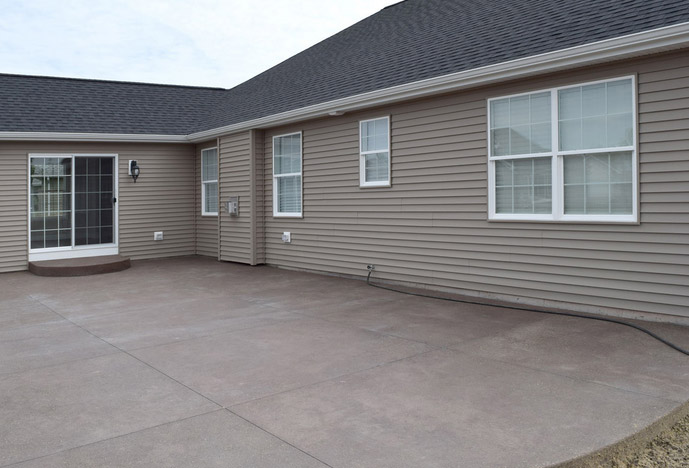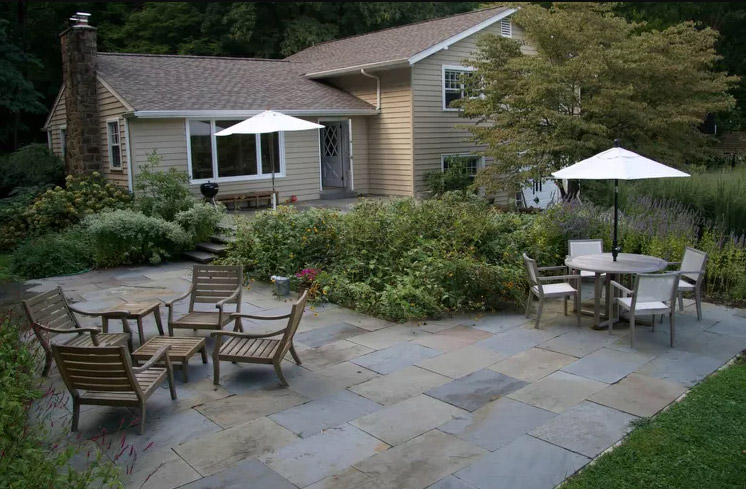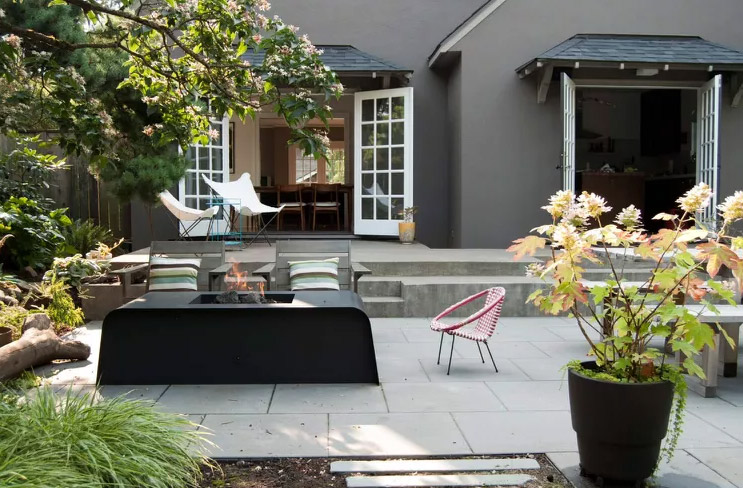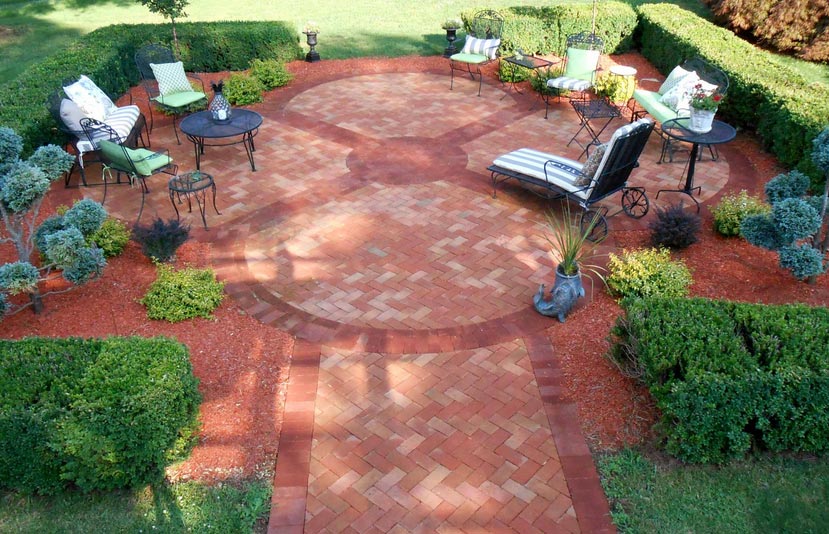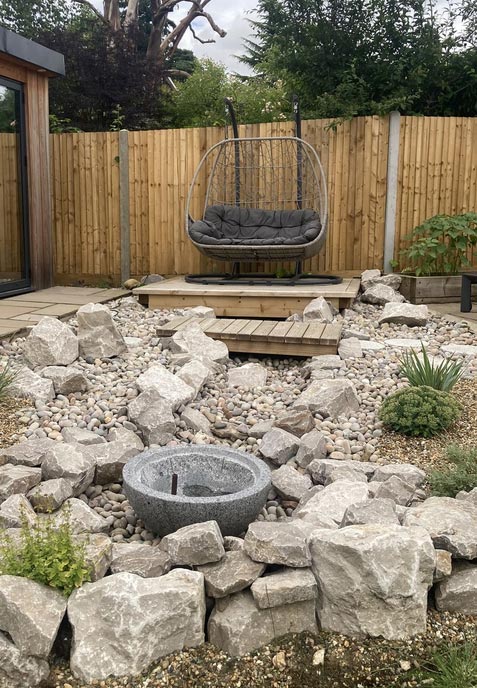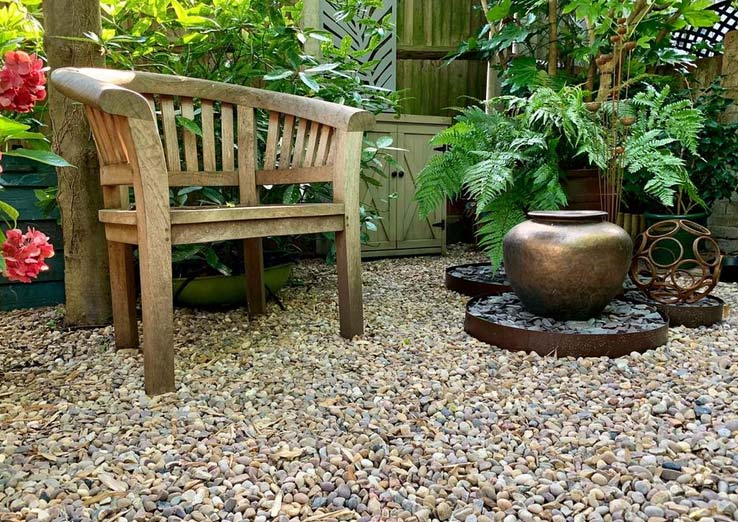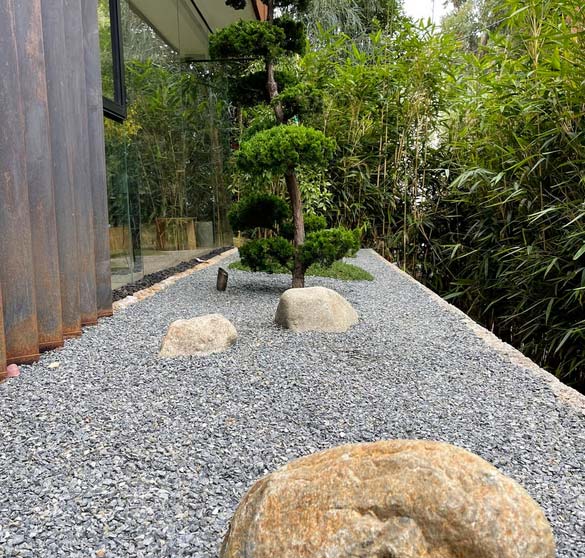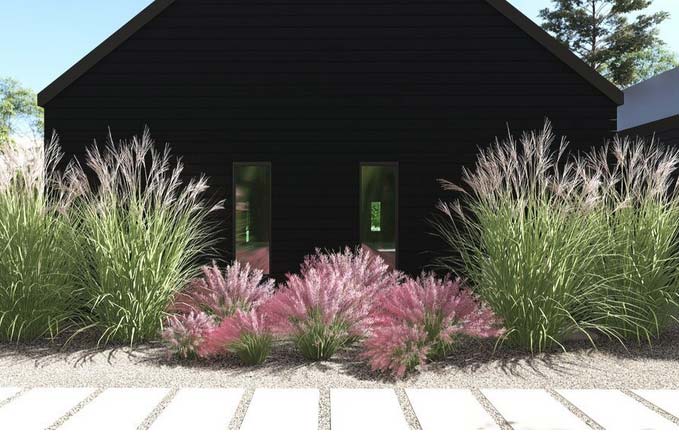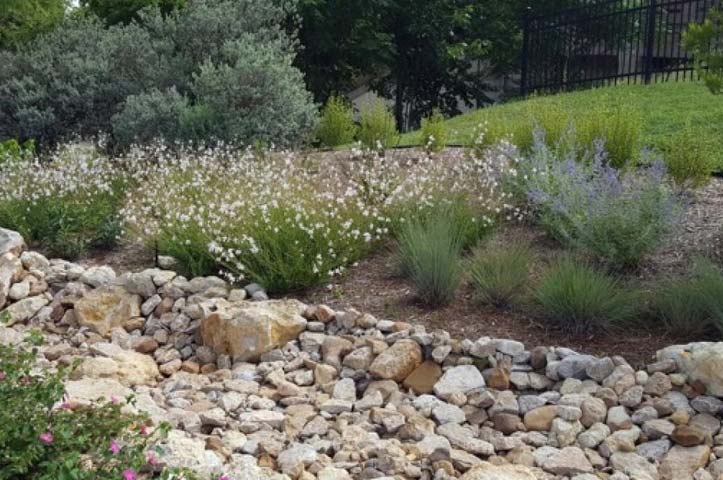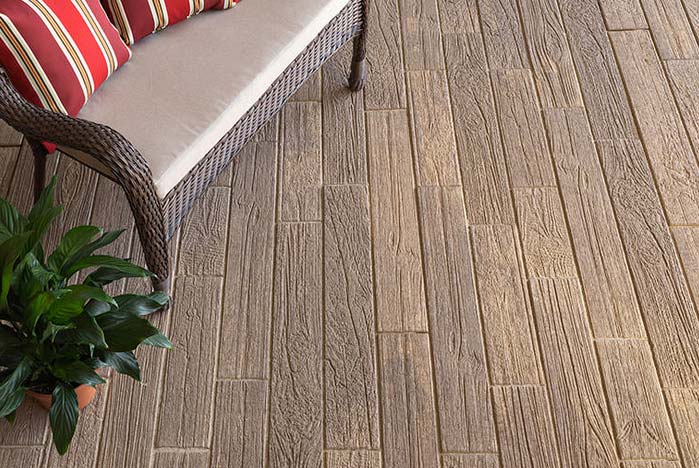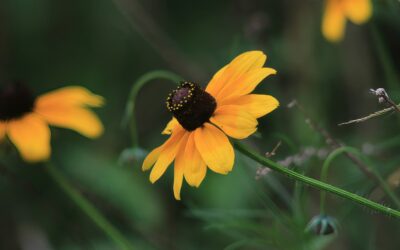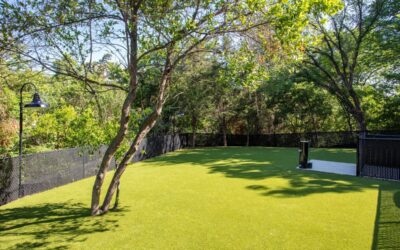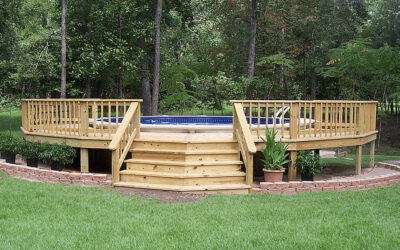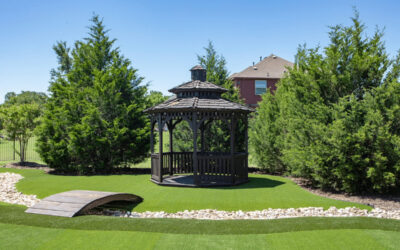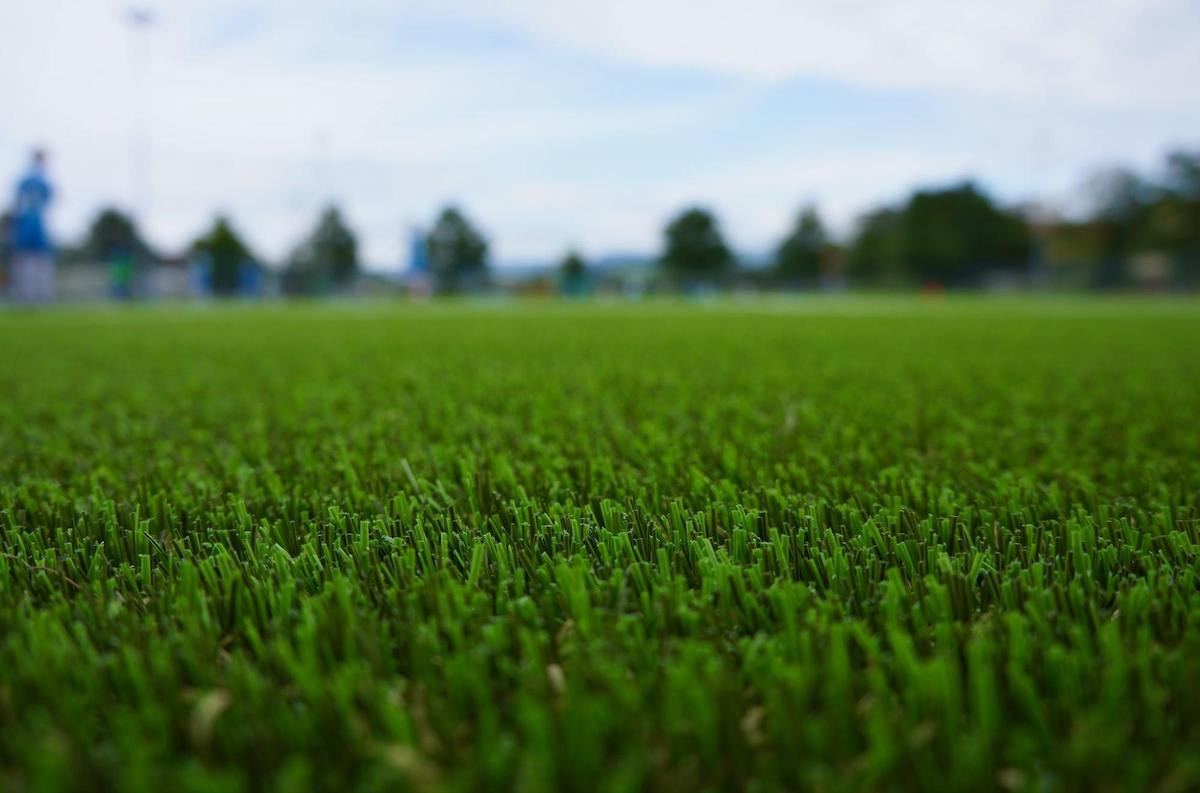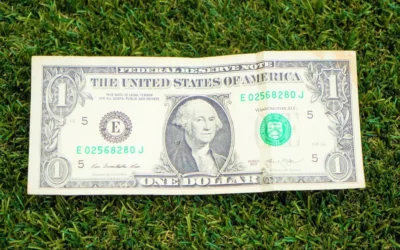Mowing the backyard lawn on Sundays is not your idea of fun? Got better things to do with your weekends than watering the grass and tending to the garden? Tired of paying a lawn maintenance company too much money to maintain your yard?
If so, you’re like a large chunk of people in the U.S. who find tending the lawn an unwanted household chore.
The average homeowner spends 70 hours per year on lawn care and the annual maintenance costs of real grass are estimated at $1,600-$1,700 for a large, 10,000-square-foot lawn.
You don’t need to be a professional landscaper to solve these problems. Free up time and money by following some of these low-maintenance backyard landscaping ideas to replace grass…
1. INSTALL ARTIFICIAL GRASS
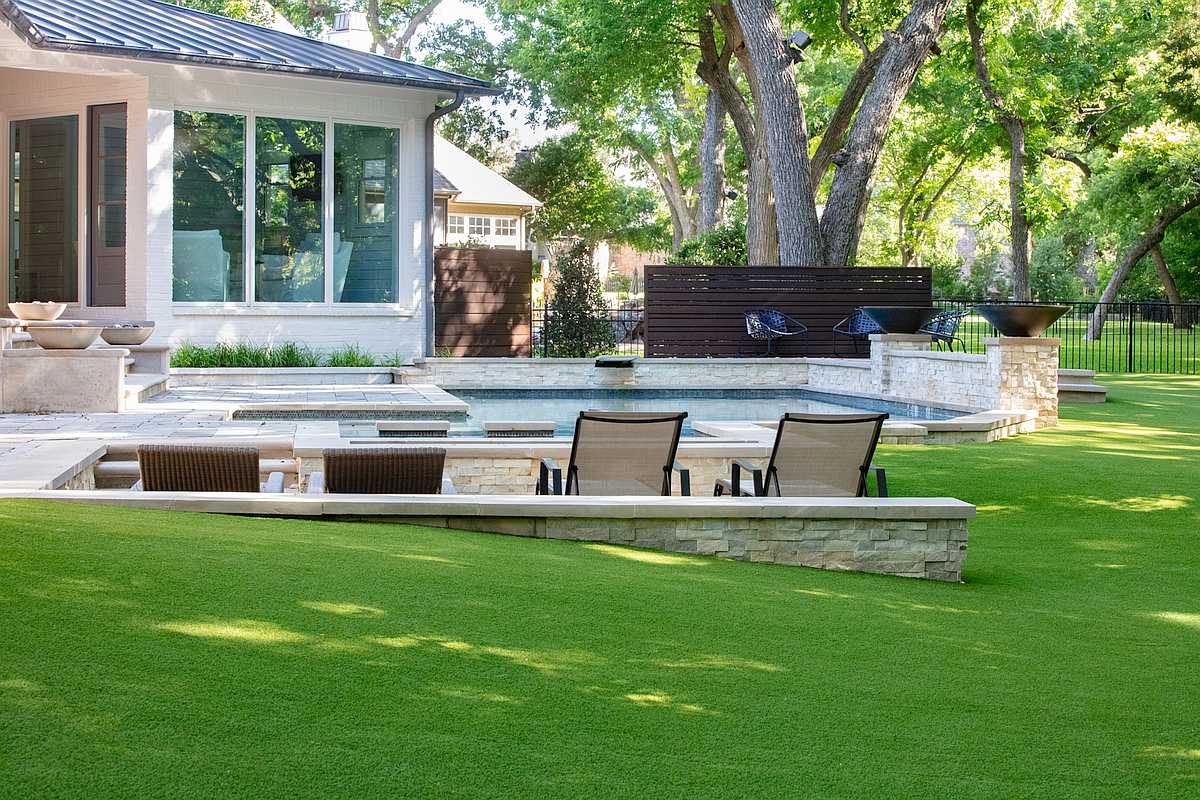
Artificial grass is a popular “lookalike” material used in yards across the country. Closely resembling natural grass, the best artificial grass is verdant, soft, and lush just like the real thing—but involves far less maintenance than real grass.
Artificial turf needs no water, sunlight, mowing, weeding, fertilizers, pesticides, aeration or reseeding to flourish. With a little attention to clearing dirt and debris and cross-brushing, your synthetic grass will last up to 20 years and pay back the initial investment within about five years.
You can also use turf for more than backyard lawns. Its flexibility allows homeowners to design play areas for kids, dog runs, turf strips around swimming pools, and even backyard putting greens and mini-soccer pitches.

High-quality artificial grass provides good traction and is not as hard a surface as some of the options discussed below.
GET A FREE ARTIFICIAL GRASS ESTIMATE
The experienced team at DFW Turf Solutions can help you install the lowest-maintenance option for your backyard. Get a free estimate here.
2. POUR CONCRETE
There’s one thing you can say for sure about plain old concrete: it’s low maintenance.
It may not always look the best, be the most colorful option or offer much in the way of flexibility; it also means a very hard surface that can be slippery when wet, which can lead to cuts and grazes for the kids—but you won’t have to worry about much upkeep.
Traditional poured concrete backyards can last a lifetime and are one of the most cost-effective low-maintenance options. You can check how much concrete you’ll need for your yard here.
However, concrete is not indestructible and is susceptible to cracks, chips, and stains so may occasionally need some running repairs. When it comes to drainage, concrete yards should have slight, barely perceptible slopes to ensure rainfall is channeled away from the yard area.
3. USE STONE PAVERS
Natural stone pavers are a stylish and low-maintenance addition to a backyard.
With more creative designs available than with poured concrete, they’re a good option for homeowners with a little more to spend on aesthetics without the work that goes into a real grass lawn or the initial investment required for artificial grass. If pavers break or become discolored, they can be easily lifted and replaced—unlike with concrete.
Paved patio areas require little more than an occasional hose down to clean them. Like with concrete, however, there are pros and cons of pavers and this hardscaping option means an unforgiving surface for trips and falls, and may be slippery when wet.
Choose a professional installation from a landscaping team that understands the local climate as this may affect drainage and other considerations with pavers.
4. CREATE A RED-BRICK PATIO
Red brick is another low-maintenance landscaping idea that is popular for backyard areas across the U.S. Red brick pavers are more homely and inviting than plain concrete and should also be permeable enough to handle heavy rainfall.
These yards will require little more than an occasional hose down to clean and areas that become damaged are easy to repair—simply swap the damaged or chipped bricks for new ones.
A red-brick yard still requires a professional installation. To aid drainage, install the bricks on a barely perceptible slope. Refer to these red-brick patio ideas for inspiration if you go down this route.
5. BUILD A ROCK GARDEN
Sometimes, yard owners without “green fingers” are better off opting for rocks rather than vegetation.
Rocks, stones, and boulders have a type of stark beauty and unlike flower beds, lawns, trees, shrubs, and hedges require almost no maintenance.
With a paved patio and a well-appointed rock garden, you can put your feet up on weekends while the neighbor is busy trying to locate the fuel to power the lawnmower!
For inspiration when designing your rock garden, check out these ideas.
6. LAY MULCH IN YOUR YARD
Mulch has many uses in gardens. Backyard landscaping mulch commonly consists of a variety of organic materials, including tree bark, wood chips, and pine straw. It may be spread on top of soil to reduce weed growth and retain moisture or improve aesthetics. Mulch may be particularly beneficial in hot, dry climates.
Wood chippings and chunky mulch can be laid a few inches deep as an alternative to concrete or other landscaping ideas or around plants and shrubs that need little care. It will add a natural touch and soften hardscaping in backyards.
All you should need to do with mulch is keep it topped up, replace it every few years, and sweep up any stray pieces now and again.
7. SPREAD PEA GRAVEL
Another eye-catching yet practical backyard material to use for low-maintenance landscaping is pea gravel. This consists of small, pea-sized stones available in a variety of neutral colors—usually creams, grays, and tans.
Used around flower beds and trees, and in combination with artificial grass or real grass in a front or back yard, pea gravel can add natural beauty, allowing for good drainage and comfort underfoot (because gravel is rounded), and requiring very little attention other than an occasional top-up.
8. SPREAD CRUSHED ROCK
An alternative to pea gravel but similar in properties and just as low maintenance is crushed rock.
The main difference between crushed stone and gravel is that crushed rock usually consists of pieces with more jagged edges than round-edged pea gravel, depending on the type you choose. Crushed rock is manufactured by breaking up large pieces of limestone or other rock types in an industrial processor whereas gravel is usually found naturally in river beds or gravel pits.
Drainage and care requirements are minimal with crushed rock, though if you use it next to real grass, pieces of rock can end up on the lawn and create problems.
9. GO WITH NATIVE PLANTS
If you prefer to brighten your yard up with vegetation rather than pure hardscaping, your choice of plants, trees, and shrubs will affect how much work you’ll have to put in to keep things looking fine.
If you want to reduce the backyard workload, perennial plants return year after year and are better than annuals. Better still, plants that are native to your area will be hardy and resilient, flourishing naturally in the local climatic conditions. This will reduce the need for watering, pesticide usage, and general maintenance work.
Another option, if you prefer hardscaping, is to grow plants in pots dotted around your yard, softening the ambiance and bringing color to the space.
10. INSTALL LOOKALIKE “WOOD” PAVERS
One interesting alternative to traditional stone, concrete pavers or artificial grass is to install wood pavers—or pavers made from a lookalike material.
Lookalike materials have become more common with technological advances, allowing more realistic faux wooden appearances for all types of landscaping and construction materials.
Composite materials can emulate the look and feel of wooden planks, tiles or pavers, bringing a homeliness to a patio area that concrete or stone may not be able to achieve—while remaining equally low maintenance.
Mulch or artificial grass around the lookalike wood pavers can also soften the appearance of the pavers and bring a natural aesthetic to the yard space.
FAQs

SAVE TIME AND MONEY WITH AN ARTIFICIAL GRASS YARD…
The cost to install artificial turf is higher than real grass but the benefits of low maintenance mean that it pays for itself with a high return on investment and by freeing up a considerable amount of time.
If you DON’T love mowing the lawn, the low-maintenance landscaping ideas outlined above can help you maintain a yard that looks great but without the work involved in lawn care.Considering switching from real grass? Speak to our experienced team of turf professionals to discuss your options. We’ve helped homeowners enjoy low-maintenance turf areas in their front, back, and side yards for well over a decade…

